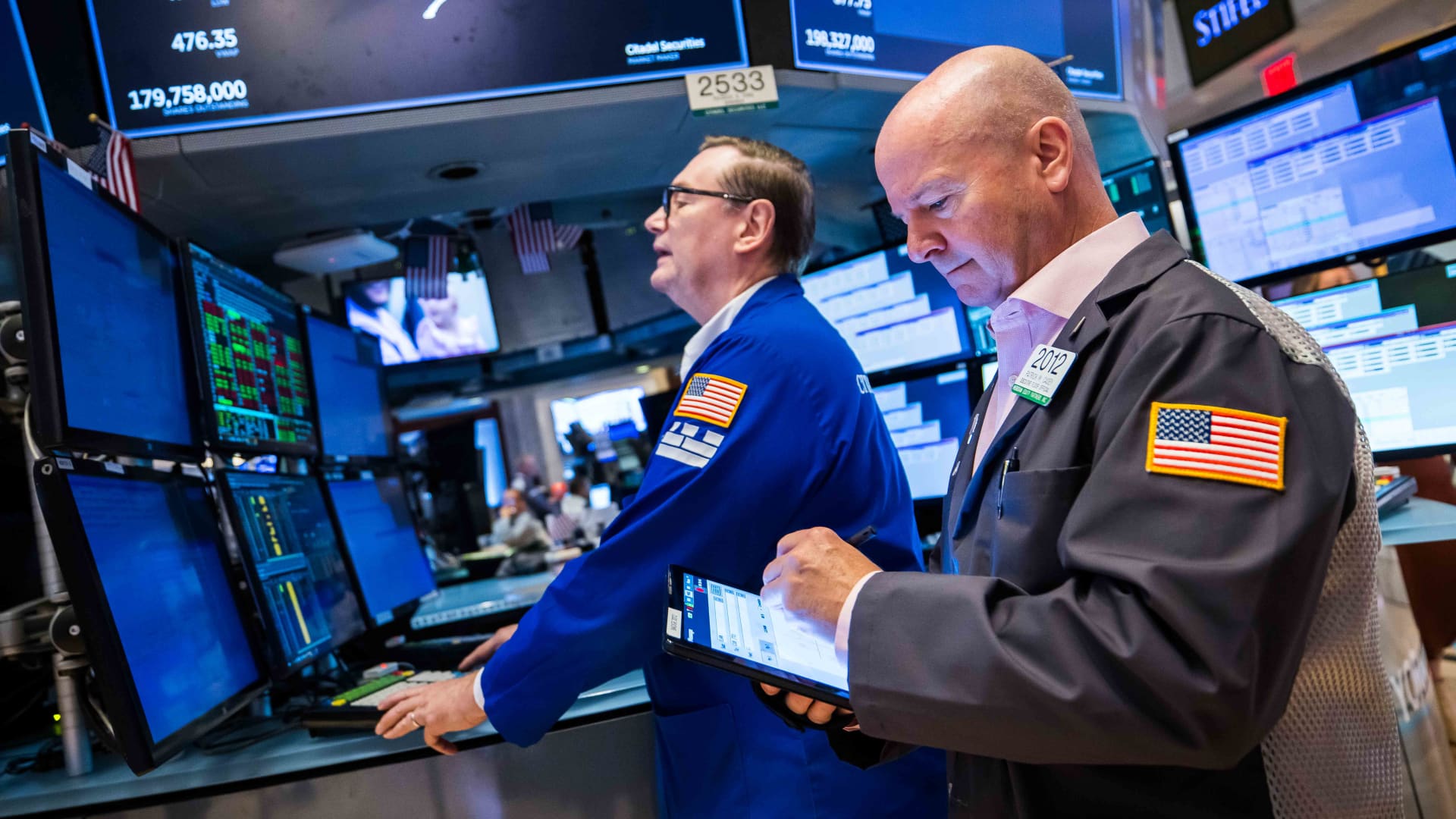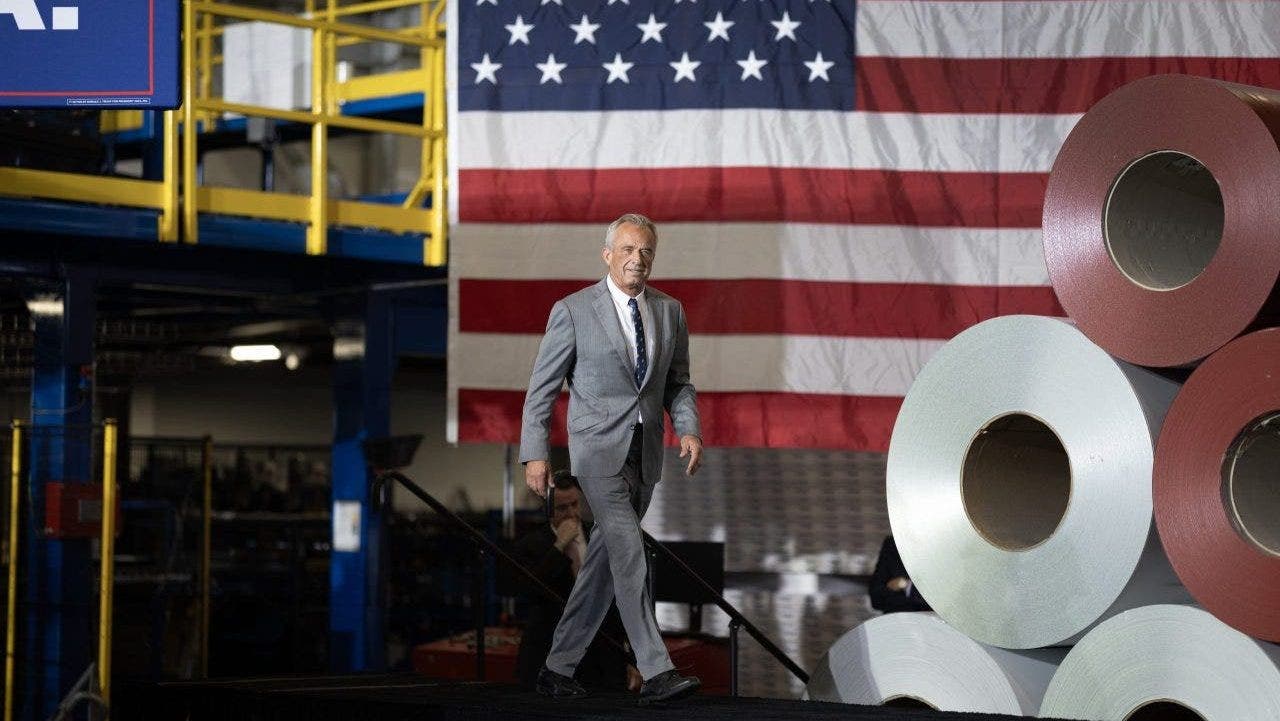The bull market continues to command respect. Most investors are now granting it, some more grudgingly than others. Start with the S & P 500 ‘s 20% gain for the year, averaging more than one record high per week, the index surviving unharmed through nearly all of the supposedly scary month of September. Then there’s the upside progress made in the third quarter without the leadership of super-cap tech – the equal-weighted S & P 500 is up nearly 9% since June 30 and the Nasdaq 100 up less than 2%. And note the way the tape immediately processed the Federal Reserve’s half-percentage-point rate cut this month as a de-facto de-aging treatment for what was seen as an elderly expansion. In the eight trading sessions since, the market has declined to retract that assessment. Since the Fed decision, the data on unemployment claims and consumer confidence have been reassuring, while data revisions have lifted prior estimates of GDP, personal income and the household savings rate for prior quarters, showing that the economy was never as close to stall speed as popularly believed. Long-term Treasury yields have lifted noticeably since the Fed move, the 10-year up from 3.62% to 3.75%, which both conforms to historical post-rate-cut patterns and reflects a relaxation of macroeconomic fears. Friday’s benign PCE report blessed the market’s conclusion that inflation is defanged while blessing the rationale for the Fed’s “peacetime rate cuts.” .SPX YTD mountain S & P 500 YTD Oh, and then the Chinese government fired a barrage of stimulus measures last week that caught a skeptical trading community by surprise, sent Chinese and China-levered stocks flying and sketched a new reality in which the fiscal and monetary authorities in the two largest world economies are actively promoting growth. This at a time when credit markets are profoundly strong and corporate profits are on the upswing. Scott Chronert, Citi market strategist, sums it up: “Markets have clearly reacted positively to the Fed recalibrating policy to falling inflation…Still, near-term upside risks could come from the misalignment in Fed direction and S & P 500 fundamentals. Earnings growth this year is likely to be in the high-single to low-double-digits range, which usually aligns with a Fed holding steady. Growth upside relative to the Fed funds path has historically helped put a higher floor under equities. But the valuation setup is usually not so onerous.” That’s where this pileup of positives leads, inevitably, to the possibility that the market has largely figured all this out and is well and fully priced for the soft landing the Fed is working to preserve. Overvalued? The burden of proof sits squarely with the bears, and they would most likely build their case on the argument that present valuations leave little room for less-than-great news, raising the market’s vulnerability to yet another “growth scare” or whatever else might come. New money into the S & P 500 today is paying 21.6-times projected earnings over the next 12 months, a smidge below the 21.8 multiple at the prior market peak in mid-July which gave way to a couple of sharp pullbacks and a bumpy rotation out of mega-cap tech leaders. The notion that the valuation excess is all in the Magnificent Seven giants isn’t quite right, the other 493 stocks as a group sit above an 18 multiple. For sure, valuation says little about market fortunes for months or more in the future, and multiple compression tends not to hit too hard with the Fed easing and earnings headed higher. Still, the starting price has something to say about longer-term returns and the market’s ability to absorb unwelcome news. Goldman Sachs here plots the S & P 500 forward P/E at the time of each initial rate cut in a cycle. We’re now higher than even the year-2000 cut. That instance becomes relevant as a guide only if an investment-bubble unwind and recession are soon in the offing. Note the sunniest precedent – the 1995 immaculate soft landing, the one that remains in play as a version of the best-case outcome from here – had stocks quite cheap at a 12 multiple. Doesn’t mean the market can’t keep advancing from here, though it’s tough to pencil in the 24% annualized return that investors collected in the five years after the ’95 cut. The bears might further point out that it was the first week of the past two months when those growth scares flared, surrounding weak ISM manufacturing and subpar employment data. Both those data series await next week. But would the market oblige with a similar move a third month in a row with such a mini-panic, given that selling into them doesn’t look smart in retrospect and even after the Fed has uncorked its first easing move? Time for a breather? For sure, a breather would make sense for the broad market, with the S & P 500 up 11 of the past 15 days. While sentiment is not quite giddy, retail investors are quite fully exposed to stocks and bullish call-option volumes are again starting to dominate the flow. The internal oscillations have mostly been sending a friendly macro message – consumer cyclicals, banks and industrials performing well. Yet Nvidia ‘s erratic action, including three straight months making a lower high since peaking in June, and the general lack of secular-growth leadership can make the tape a bit more fickle and prone to mishap. That the CBOE S & P 500 Volatility Index was up 1.6 points to 17 on Friday with the S & P 500 dead flat and the majority of stocks higher could reflect broad geopolitical unease or the fact that the U.S. election is pulling within the VIX’s 30-day lookahead window. In either case, it’s a notable deviation from the story of placid strength being told by the S & P 500 itself. John Kolovos, chief technical market strategist at Macro Risk Advisors, is sticking with his call for the S & P 500 to work higher to 6000, up 4-5% from here, though the overlay of caution has his attention, as well. “The biggest worry here is that there is still a sense of trepidation to prevent escape velocity,” he says. ” Bitcoin’s staying under $70,000 is one example of a muted risk appetite. The historical tendency for volatility to rise to extreme levels around elections is messing with heads. Basically, volatility needs to collapse to get folks to release the hounds.” Not that muted expectations and tethered risk appetites are an outright negative for the market’s trajectory. The median Wall Street strategist target for the S & P 500 is now well below the current index level, usually not something one sees at an ultimate market peak.
Hot Topics
-


A California couple is suing JetBlue for $1 million, alleging a block of ice the dimensions of a watermelon fell from a airplane and crashed into their bed room
-


Analyst Says This Solana Meme Coin Is Primed For An Explosive 300% Breakout – Here Are The Details
-


HOW PROBLEMATIC: Ana Navarro of 'The View' Calls Snoop Dogg a 'Trained Seal' for Performing at Trump Inauguration (VIDEO) | The Gateway Pundit
Subscribe to Updates
Get the latest tech, social media, politics, business, sports and many more news directly to your inbox.












